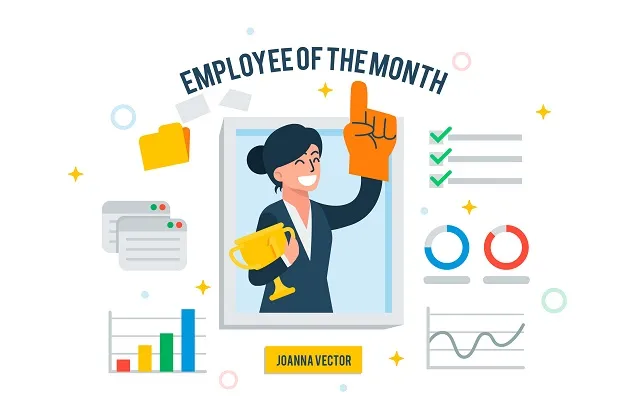Why Modern Companies Are Rethinking Their Employee Rewards Strategy

Not that long ago, employee rewards were simple. You showed up, did your job, and if you stuck around long enough, maybe you got a plaque after 10 years of service. A good quarter might mean a company-wide pizza party, and the annual holiday bonus was often more of a formality than a meaningful gesture.
But things have changed.
The workforce has evolved. Expectations have shifted. And in a world where employees have more choice and voice than ever, companies are realizing that old-school reward systems just don’t cut it anymore.
From startups to Fortune 500s, modern organizations are rethinking the way they recognize and reward their people—and not just because it’s trendy. They’re doing it because it’s essential to staying competitive, retaining top talent, and building workplaces that actually work for the people inside them.
The “One-Size-Fits-All” Model Is Broken
The traditional approach to rewards has long relied on uniformity: everyone gets the same gift card, the same annual bonus structure, or the same branded mug. While the intent may be positive, the execution often feels impersonal.
Modern teams are diverse—not just in terms of background, but in what motivates and matters to each individual. A flexible schedule might mean more to one employee than a cash bonus does to another. For some, public recognition feels empowering; for others, it’s deeply uncomfortable.
Companies are finally acknowledging that if you want people to feel valued, you can’t treat everyone the same.
Personalization has become key. Whether it’s offering a menu of reward options or tailoring recognition to each individual’s preferences, today’s rewards strategies are all about meeting people where they are—not where policy dictates they should be.
Remote and Hybrid Work Changed Everything
The rise of remote and hybrid work models has transformed the way teams connect—and that includes how they give and receive recognition. Watercooler conversations are gone, spontaneous thank-yous are harder to deliver, and employee visibility often depends on digital presence.
In this new landscape, thoughtful recognition isn’t just nice—it’s a crucial part of maintaining culture, morale, and trust.
A thank-you sent over Slack or a public shout-out during a Zoom meeting might carry more weight than ever before. But beyond words, companies are finding new ways to make those moments stick. Whether it’s sending care packages to home offices or offering digital rewards, businesses are adapting their recognition strategies to meet the needs of distributed teams.
It’s no longer about showing up in the office—it’s about showing up for your people, wherever they are.
It’s Not Just About Retention—It’s About Culture
Yes, recognition helps with retention. When people feel appreciated, they’re more likely to stay. But beyond turnover stats and HR KPIs, rewards and recognition programs shape the culture of an organization.
When companies prioritize appreciation, they foster an environment where people are more collaborative, engaged, and motivated. When they don’t, resentment builds. It’s really that simple.
Recognition also sets the tone for what’s valued internally. Are you celebrating creativity? Teamwork? Initiative? The way rewards are structured tells employees what matters—and what doesn’t.
That’s why modern companies are aligning their rewards programs with their core values. They’re moving away from purely transactional rewards toward those that reinforce the behaviors and attitudes they want to see more of.
It’s no longer about tossing out staff appreciation gifts once a year. It’s about cultivating a culture of gratitude that shows up in the everyday.
Data and Technology Are Changing the Game
One major reason companies are rethinking their approach is the rise of smarter, more flexible technology. Today’s platforms don’t just hand out gift cards—they track engagement, show recognition trends, and offer insights into what’s working (and what’s not).
This data-driven approach means companies can continuously improve their rewards strategy. Are certain departments being overlooked? Are some managers more effective at recognition than others? Are rewards tied to performance, or are they being used inconsistently?
With the right tools, businesses can stop guessing and start being intentional.
At the same time, technology allows for real-time recognition. No more waiting for annual reviews or employee-of-the-month announcements. When someone does great work today, you can acknowledge it today—and that immediacy makes all the difference.
A New Generation of Workers, A New Set of Expectations
Millennials and Gen Z now make up a significant portion of the workforce. These generations have grown up with customization, instant feedback, and platforms that let them voice their opinions. They want more than just a paycheck—they want to feel connected, inspired, and appreciated.
What’s more, they’re not afraid to leave if they don’t get it.
Younger workers expect transparency, inclusivity, and alignment between a company’s stated values and actual behavior. Recognition isn’t a bonus for them—it’s part of a workplace culture they’re choosing to opt into.
And unlike previous generations, they’re more likely to share their work experiences publicly—on LinkedIn, Glassdoor, or with their peers. So when recognition is done well, it doesn’t just benefit the individual—it becomes part of the company’s brand.
The Bottom Line
Rethinking your employee rewards strategy isn’t about going trendy or checking off a box in your HR software. It’s about recognizing a fundamental truth: people want to be seen, heard, and valued—not occasionally, but consistently.
The companies that understand this are the ones creating not only better workplaces, but better business outcomes. They’re building loyalty, attracting top talent, and shaping cultures where people actually want to show up, contribute, and grow.
So, if your rewards program still feels like a leftover from the early 2000s, it might be time to take a hard look at what your team really needs. Start small. Ask questions. Get feedback. Experiment.
Because recognition doesn’t have to be flashy to be meaningful—it just has to be real.




